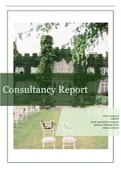Essay
The text analysis of the Travel Brochure
- Vak
- Instelling
In this paper, I’m analyzing the travel brochure about a variety of local tours organized by International travel solutions agency to Moscow. First, I’ll take a look at the specific structure of the brochure, next, I will examine the language being used to attract readers attention and differen...
[Meer zien]












